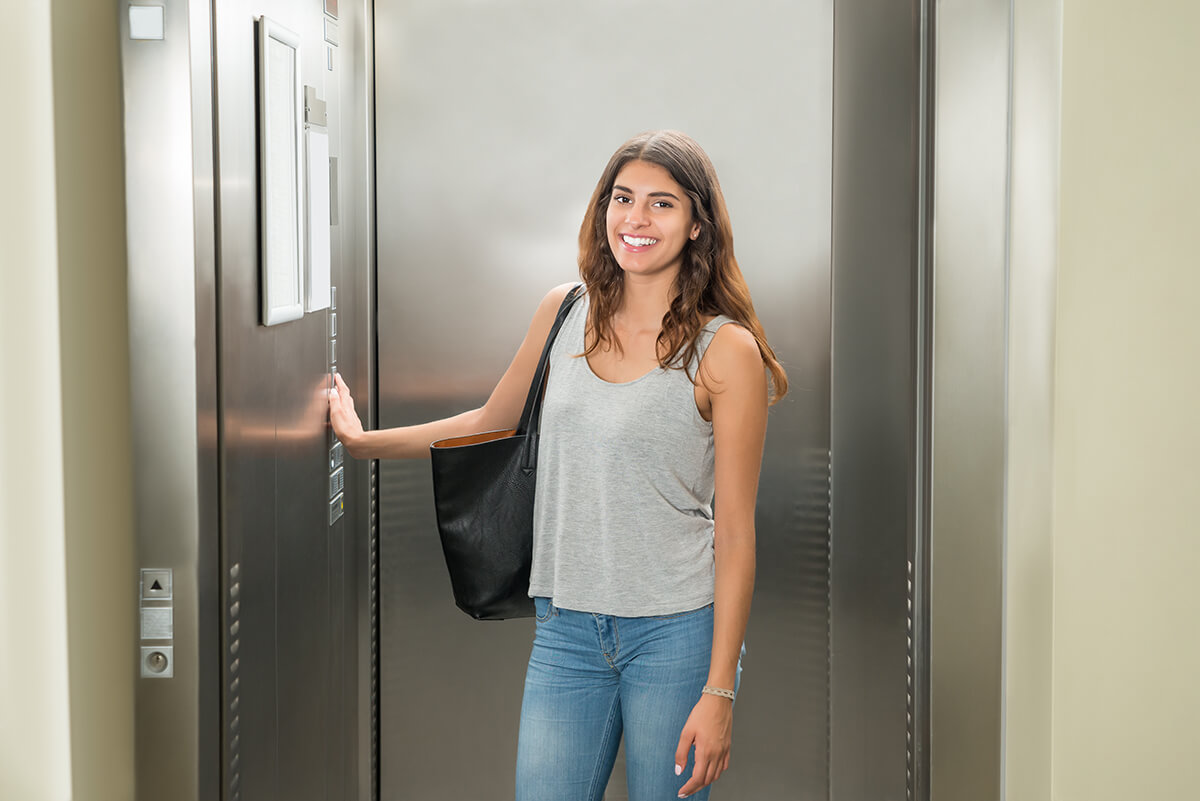Lifts are designed to last, however even the best lifts will reach a stage when the costs keeping it running outweigh the benefits of an upgrade. We look at the recent trends in high-rise apartment lifts, maintenance strategies, and what to do if you’re stuck in a lift.
Recent trends in high-rise apartments and lifts
High-rise living is becoming more common in Australia, and as a result, higher numbers of people are finding themselves getting trapped in residential lifts. In 2018, more than 1,600 people were rescued from lifts in the state of New South Wales alone, and this was an 80% jump from 2014 figures. Firefighters received 995 calls and 357 of these were for residential buildings, resulting in 587 being rescued.
But the popularity of high-rise living isn’t the only factor behind an increase in lift entrapment; an increasing number of older elevators – some from the 1960s, 70’s and 80’s – are coming to their use-by dates. Poor maintenance and/or delayed upgrades to these lifts could mean an overlooked potential liability for apartment buildings, and building managers only notice problem when the lift fails.
Another possible reason for modernisation delays is because older elevators that don’t comply with more recent stricter safety and building standards aren’t required to be upgraded as long as they’re working fine. Apartment buildings might be putting off upgrades due to costs and downtime, but the problems aren’t limited to lift failure. People riding in poorly maintained lifts could experience jerky, slow, and noisy trips or even elevators that aren’t lining up with floor levels.
When to modernise a lift
So when should you modernise? A general rule of thumb is around the 20 to 25 year mark, but some elevators might need modernising well before or after that. One clear sign is when you find it hard and/or extremely costly to source new parts. Another is frequent repairs and a lot of downtime for repairs. Regulatory creep, where older lift are no longer compliant with safety regulations, is another sign.
Modernising could improve reliability and ride quality, boost energy efficiency, and enhance power quality. In addition, it could correct levelling errors and minimise the need for technical support while providing faster travel time before floors. The downtime can be minimised to reduce disruption to the building. Finally, modernised lifts can raise the aesthetic appeal of a building and potentially its value as well.
Things not to do in a lift
If you get stuck, you might feel tempted to force your way out. However, this is one of the worst things you can do. If you’re trying to force the doors open and alight from the lift when the lift is not at floor level, the lift could start operating again. This can be extremely dangerous, putting you at risk of serious injury or worse. Certainly there have been injuries and deaths in Australia and other countries because people have tried to leave a stuck lift and fallen or been injured. Stay inside the elevator as it’s the safest place to be at that time.
Lift maintenance: best practice strategies
Regular maintenance is vital for all lifts. Regular maintenance programs could keep your building and systems safe, in compliance with regulatory requirements. Preventative maintenance for lifts can ensure lifts work reliably. Ideally each maintenance service should cover doors, control panels, operating panels, cables, rollers, and guide rails, and replace parts as required.
What to do if you get stuck in a lift
With more people getting stuck in a lift, it’s helpful to consider what to do if you do end up getting stuck yourself. The first thing to remember is not to panic. Elevators are designed to be fail safe, so the lift stopping is actually a safety measure to keep you safe. Don’t worry about the elevator falling as they’re typically help up by multiple steel cables as well as having multiple electrical and mechanical safety devices fitted.
Use the emergency lift phone or communications panel to call for help. Most modern elevators will have a phone fitted. You’ll be asked to give your name, mobile number, location, and lift number, which you’ll usually be able to find on a plate in the lift. Some systems will have a system that automatically sends those details to the lift call centre. Once you’ve contacted them, wait for a trained technician to arrive, Again, never try to force the doors open to leave the lift. Keep calm, try breathing techniques or meditation to centre yourself, chat to others, or stay occupied on your phone.
With more people living in high-rise apartment buildings and older lifts arriving at end-of-lifecycle stage, stuck-lift incidents seem to be more common. Having a good preventative maintenance strategy and recognising when it’s time to modernise could help these high rises avoid the inconveniences and risks associated with failed lifts.
Do you need to upgrade your apartment building lift or implement a more vigilant maintenance plan? Liftronic has more than 30 years of experience in lift design, installation, maintenance, and modernisation. We can give you expert advice on the best option for you, so contact us today for a discussion.

